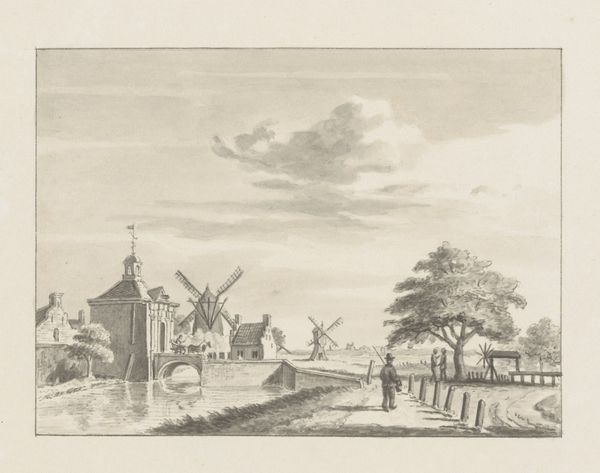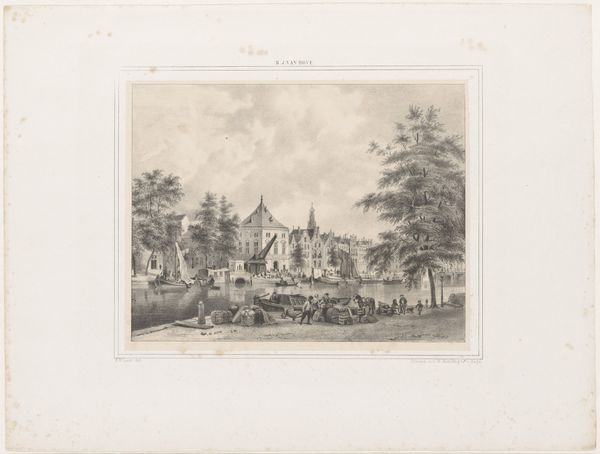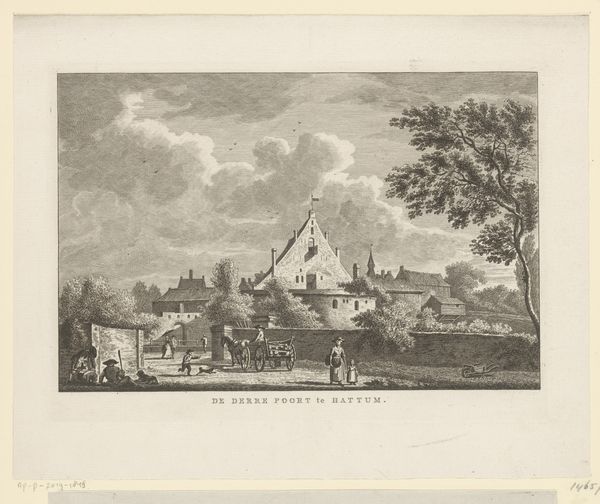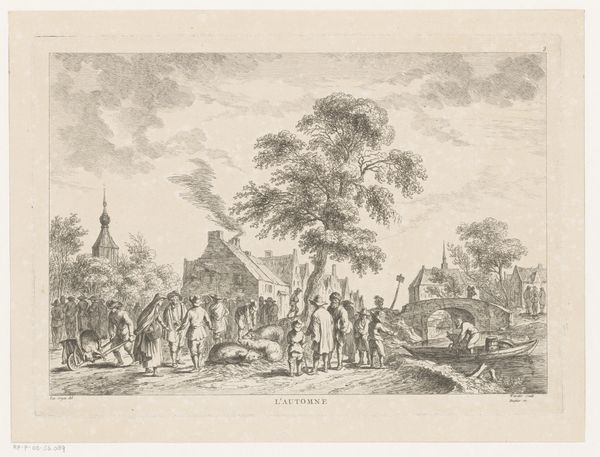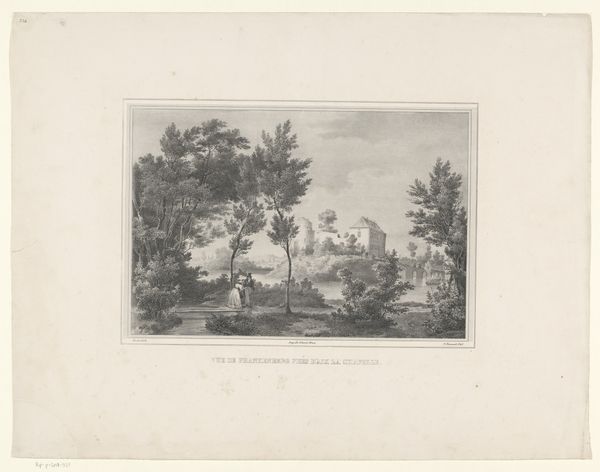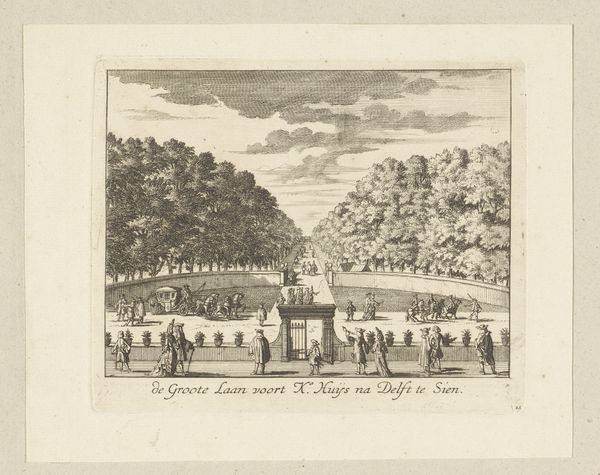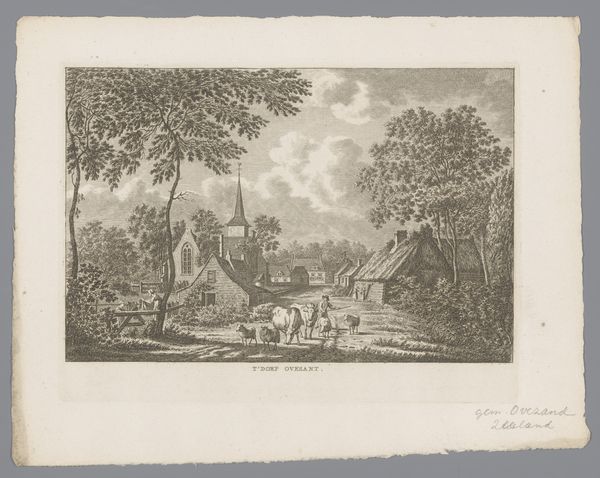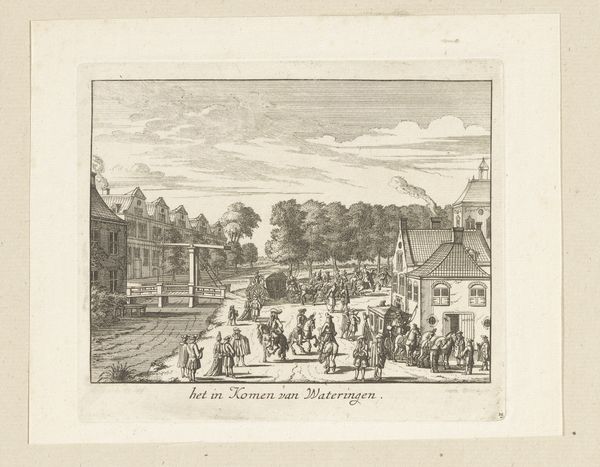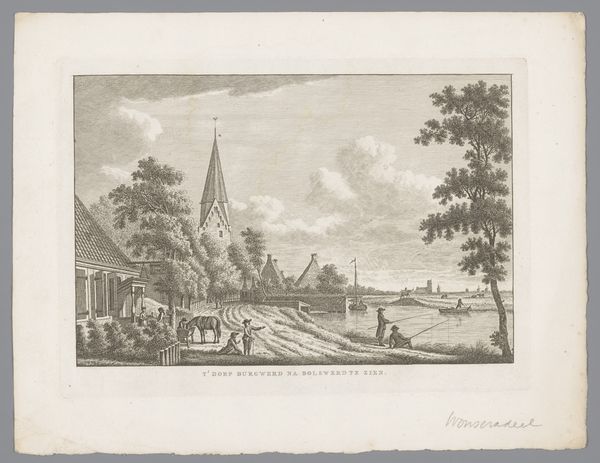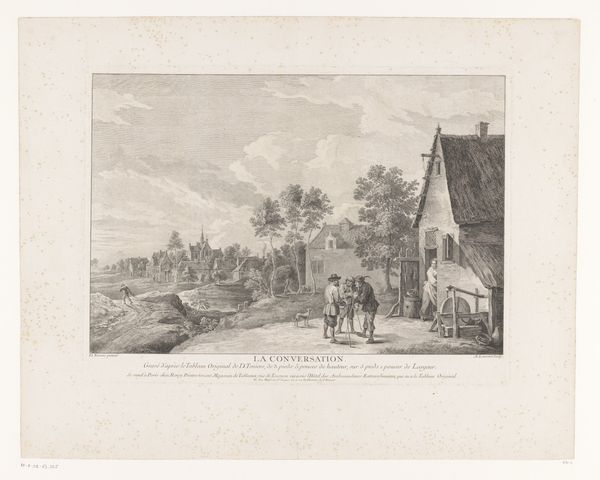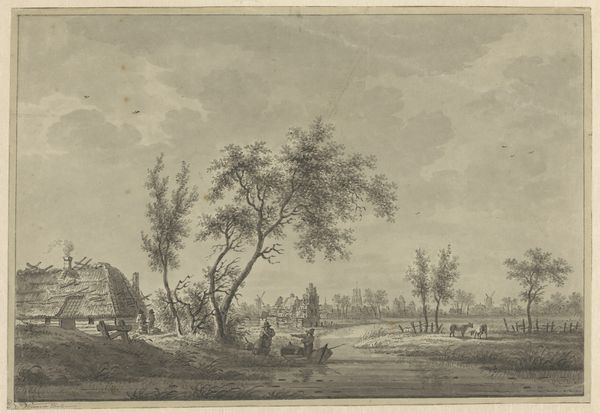
print, etching
#
neoclacissism
# print
#
etching
#
landscape
#
cityscape
#
genre-painting
Dimensions: height 161 mm, width 204 mm
Copyright: Rijks Museum: Open Domain
Curator: Let’s turn our attention to this etching entitled "Gezicht op het dorp Overveen," dating back to the late 18th century, attributed to an anonymous artist. What is your first impression? Editor: A village idyll! I’m struck by how deliberately composed this landscape feels. The way the buildings, figures, and even the trees are positioned creates a sense of balance, but also a subtle artificiality. Like a stage set, almost. Curator: Indeed, we see many conventional symbols of Neoclassical aesthetic ideals. Think about it as the artists intention was to present Overveen as the emblem of a community guided by the virtues of stability, moral integrity, and civic duty, mirroring broader social values through symbols recognizable to its elite audience. The careful rendering suggests enduring ideals that offer solace and affirmation to those sharing in a specific world-view. Editor: That resonates with the staging. The figures seem placed to observe, to perform this very orderliness. It’s almost eerie. There's this detachment. I mean, what are these people doing? Curator: Many are engaging in commercial transactions, social interactions and daily routines. They affirm and partake in the community fabric as it appears. Their symbolic roles, and activities serve less to convey the complexity of individual experience than to reinforce communal norms and shared ideals, reflecting stability, conformity and tradition. It speaks to a culture that emphasized societal cohesion over individuality, reflecting a very Neoclassical ambition of achieving a harmonious social order, a key objective during this period. Editor: Right. I’m still caught on the detachment, though. Look at the large sail or awning set up in the left corner. Is it a symbol of enterprise or some local market? What's the relationship between this bustling little marketplace and the almost frozen figures within the rest of the print? Are they truly participants, or are they there to make this etching appeal more, an allegory? Curator: That sail most likely evokes prosperity via trade, linking to broader economic aspirations of the Dutch Golden Age ideals being reprised through such symbols. By carefully portraying Overveen in a state of social order and progress, this representation promotes confidence in maintaining historical standards and civic commitments in spite of growing challenges. The artist offers comfort through familiarity. Editor: Perhaps that appeal to tradition, order, is precisely why it strikes me as a bit unsettling. Knowing the revolutionary undercurrents brewing during that period, this carefully constructed image almost feels like a form of denial, or a desperate clinging to a romanticized past. Curator: An interesting counterpoint to remember as we consider that symbolic dimension. The print stands both as a quaint cityscape and also as a reflection of enduring cultural values. Editor: I will definitely keep looking for some more unsettling visual metaphors whenever I visit a gallery or a museum from now on!
Comments
No comments
Be the first to comment and join the conversation on the ultimate creative platform.
